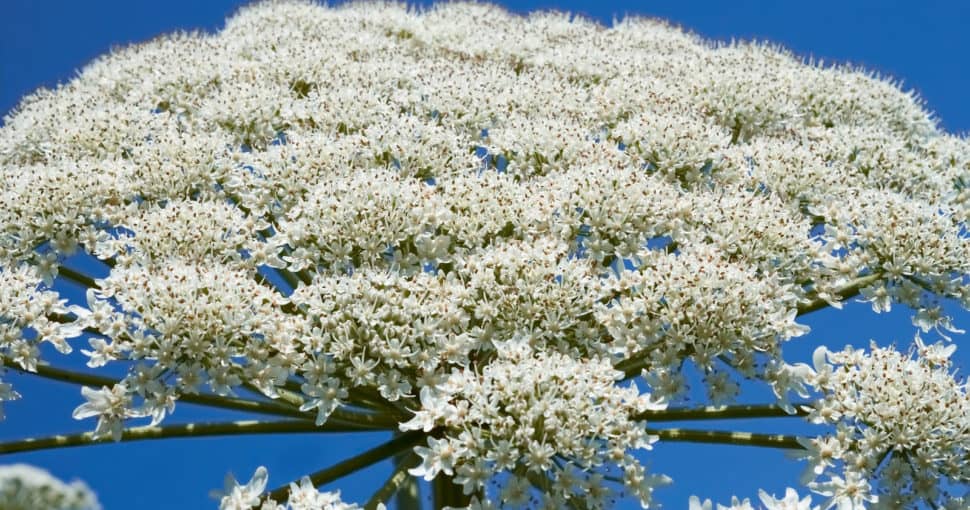Known for its beautiful outdoor adventures, tourists and locals love spending their time hiking in Michigan. The weather is always favorable and going outdoors is a treat for everyone, especially when there is so much beauty to explore and discover. Just be careful of the poisonous plants!
Contents
- 1. Poison Ivy (Toxicodendron Radicans)
- 2. Poison Oak (Toxicodendron Diversilobum)
- 3. Giant Hogweed (Heracleum Mantegazzianum)
- 4. Wild Parsnip (Pastinaca Sativa)
- 5. Poison Hemlock (Conium Maculatum)
- 6. Poison Sumac (Toxicodendron Vernix)
- 7. Maidenhair Fern (Adiantum)
- 8. Field Horsetail (Equisetum Arvense)
- 9. Juniper (Juniperus Communis)
- 10. Jack-in-the-pulpit/Indian Turnip (Arisaema Triphyllum)
- 11. Meadow Saffron (Colchicum Autumnale)
- 12. Lily of the Valley (Convallaria Majalis)
- 13. Meadow Garlic (Allium Canadense)
- 14. Wake Robin (Trillium)
- 15. Carrion/Corpse Flower (Smilax Herbacea)
- 16. Northern Blue Flag (Iris Versicolor)
- 17. Lady Slipper Orchid (Cypripedium Reginae)
- 18. Great Nettle (Urtica Dioica)
- 19. Wild Ginger (Asarum)
- 20. Sheep Sorrel (Rumex Acetosella)
- 21. Buckwheat (Fagopyrum Esculentum)
- 22. Periwinkle (Catharanthus Roseus)
Even though it is not often that the poisonous plants in Michigan make headlines, there is no denying that these plants can lead to blindness, vomiting, diarrhea, blistering, and even severe burns. Hence, it is important that before you go hiking with your family, friends, and pets, you read through the list of poisonous plants along with their side effects to ensure that you can keep your loved ones safe.
In this article, we have discussed the 22 most poisonous plants in Michigan. We have provided characteristics and details to help you identify these plants if you are ever in the wild, along with the consequences of ingestion or contact. In case of a medical emergency, make sure to contact your local medical practitioner as soon as possible.
1. Poison Ivy (Toxicodendron Radicans)
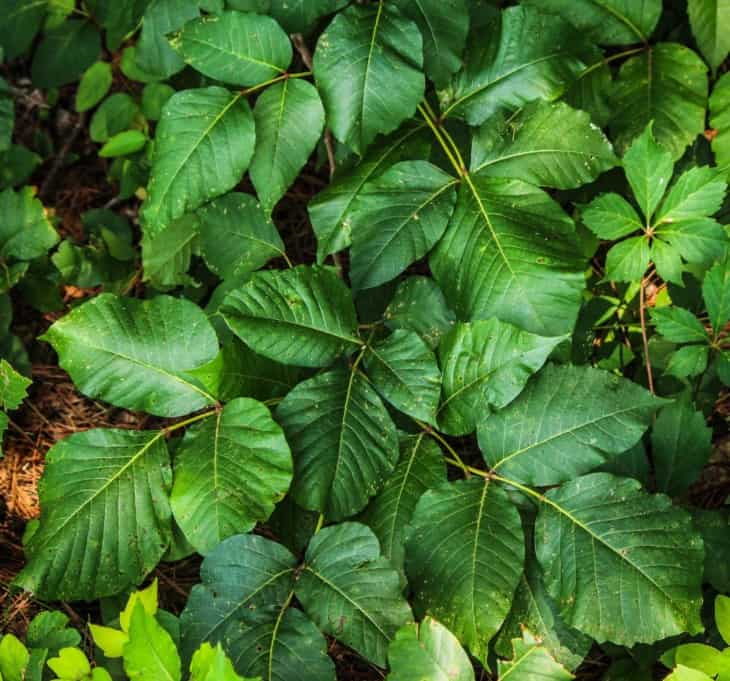
Poison Ivy can grow anywhere in Michigan, including in your backyard. Even though it is a common weed, it is extremely dangerous – simply brushing against it can cause a serious allergic reaction, causing one to break out in itchy, painful bumps. Any pet, clothes, or thing that has rubbed against this plant can transfer the reaction to humans.
It contains a chemical known as urushiol that causes a reaction in 80 percent of humans. Hence, it is important to look out for leaves of three. If you see them, do not go near them as the plant is likely Poison Ivy.
2. Poison Oak (Toxicodendron Diversilobum)
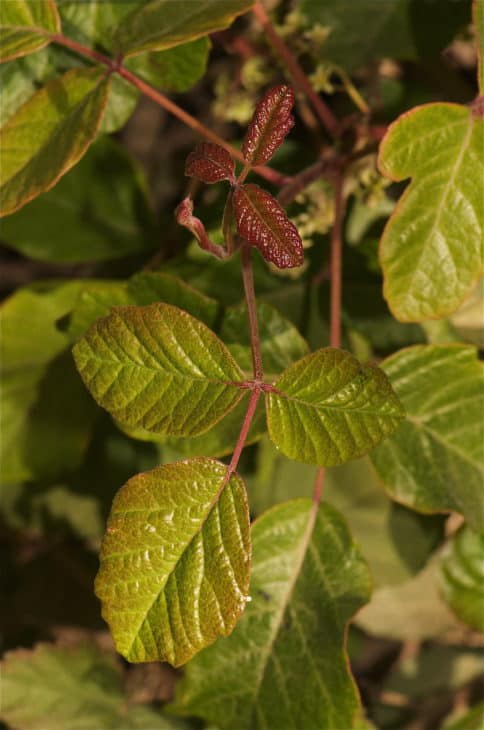
Poison Oak is similar to Poison Ivy, but it varies in looks. While the Poison Ivy and Poison Oak have three leaves, the leaves for the former are smooth, while the leaves for the latter are rather jagged-looking.
The key is to stay away from any plant that has a cluster of three leaves. Even though Poison Oak usually looks like a shrub, it can also look like a vine if it grows in shaded areas. In the spring, these leaves can be green while changing to yellow in the summers and brown in the fall.
3. Giant Hogweed (Heracleum Mantegazzianum)
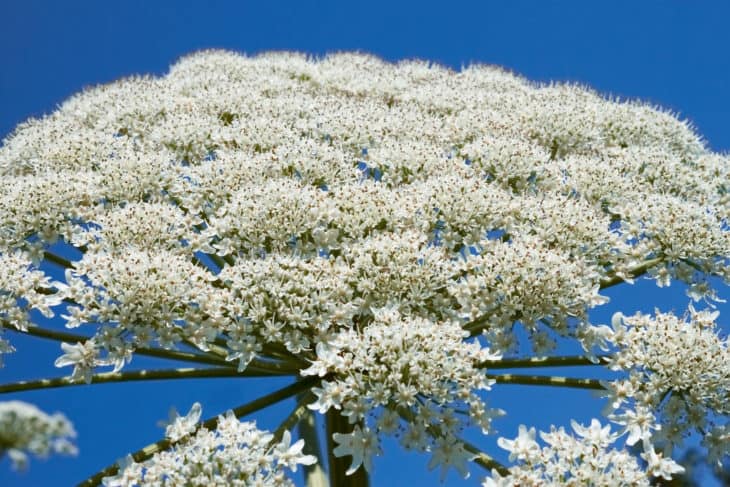
Giant Hogweed is probably the most dangerous and poisonous plant in Michigan. Lucky for you, this plant is not common – only 2 percent of plants are suspected to be Giant Hogweed. Moreover, it has an unmistakable appearance – it can grow to a height of 8 to 12 feet and has big flower heads that resemble inside-out umbrellas.
If you come in contact with this plant, it can cause phytophotodermatitis – this is an inflammatory reaction that causes the skin to become sensitive to UV light and causes blisters on the skin. If it comes in contact with your eyes, it can also cause blindness.
4. Wild Parsnip (Pastinaca Sativa)
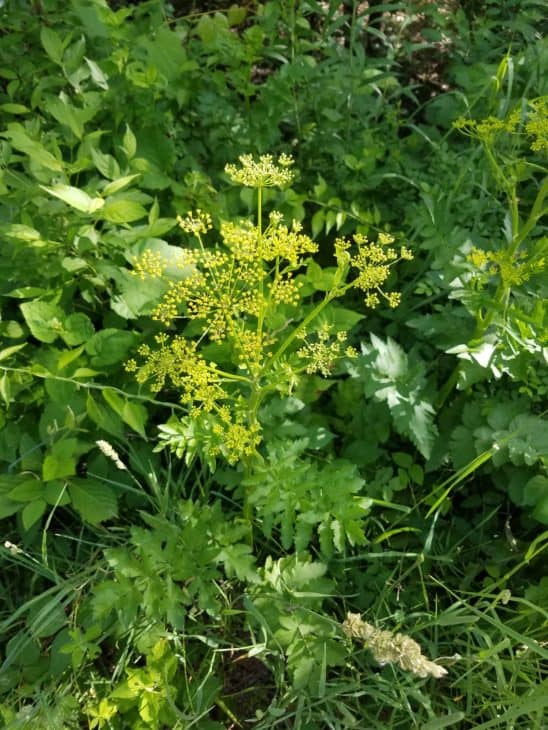
Almost like the Giant Hogweed, this plant is smaller, and it has yellow flowers. It usually grows in park trails and on roadsides, sunlit places, and grassy areas. It needs to spread its branches along, so it requires space to grow.
Similar to Giant Hogweed, this wild parsnip can also cause phytophotodermatitis. Hence, you must keep your distance from it and ensure that your kids and pets do not go close to it.
5. Poison Hemlock (Conium Maculatum)
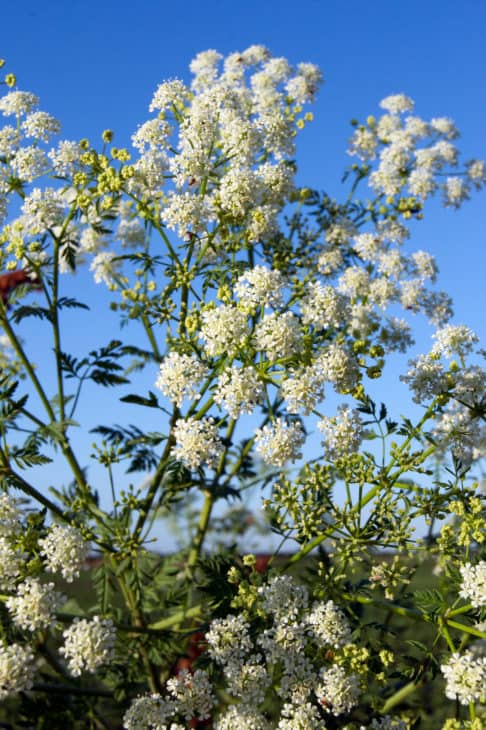
Particularly common in southwest Michigan, this plant contains toxins which can seep into the skin with the slightest contact. If this happens, you may experience symptoms like paralysis, trembling, dizziness, and even death. If you must handle these plants, make sure to wear gloves and a facemask.
When going hiking, we would recommend that you wear long pants and closed shoes to minimize the risk of contact with this plant.
6. Poison Sumac (Toxicodendron Vernix)
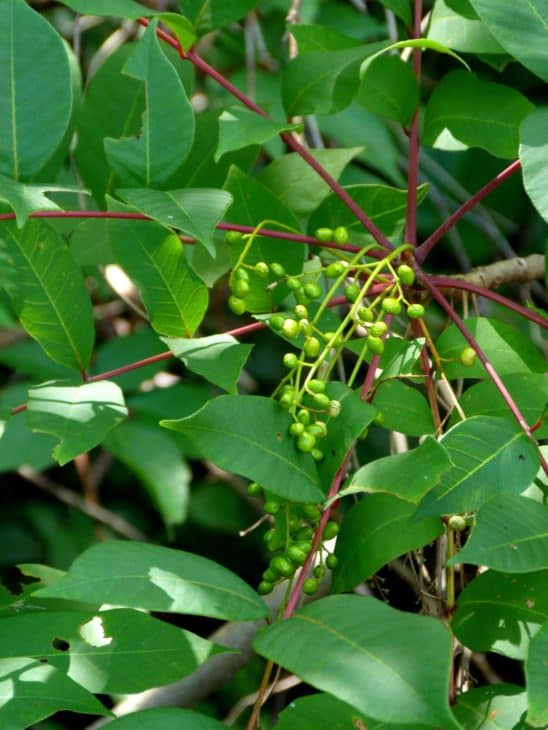
Poison Sumac is a small tree or woody shrub that can grow to a height of 9 m tall. The flowers that grow are yellow-green in color with a total of 5 petals that look like dangling panicles. You will usually find rabbits and birds attracted to the drupes. The stems of these plants are red, and the bark is smooth.
7. Maidenhair Fern (Adiantum)
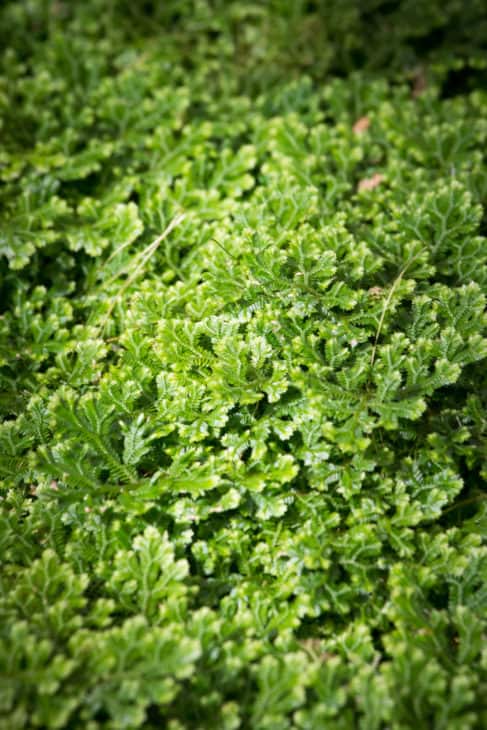
Maidenhair Fern plants have a distinctive appearance – the leaf tissue has black stripes, and the leaf itself is bright green in color. The delicate fan-shaped leaves are smaller than other types of ferns. Even though this plant is safe for cats and dogs to consume, it can lead to a reaction in other pets and humans and can cause a choking reaction.
8. Field Horsetail (Equisetum Arvense)
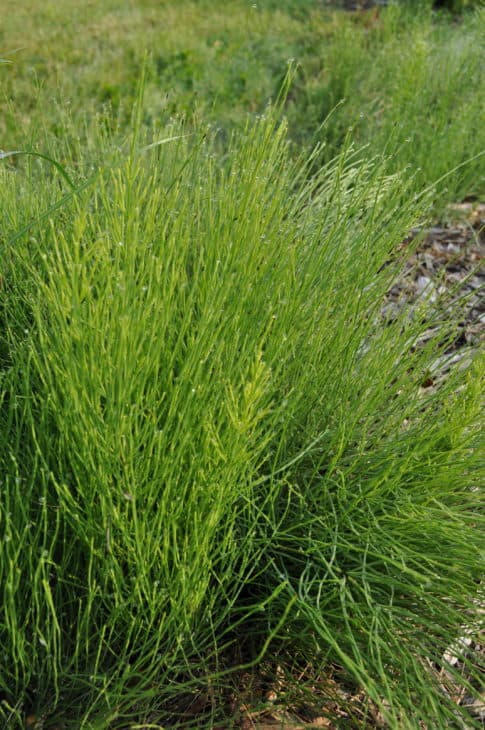
The stems of the Field Horsetail are pale brown or white in color. They are thick, short, and topped with a reproductive structure that is rather cone-like. The structure can grow 1 to 4 cm long and is commonly found in poorly drained areas. This hollow weed contains thiaminase, which makes it poisonous for horses. If consumed, it will break down vitamin B1 in the body.
9. Juniper (Juniperus Communis)
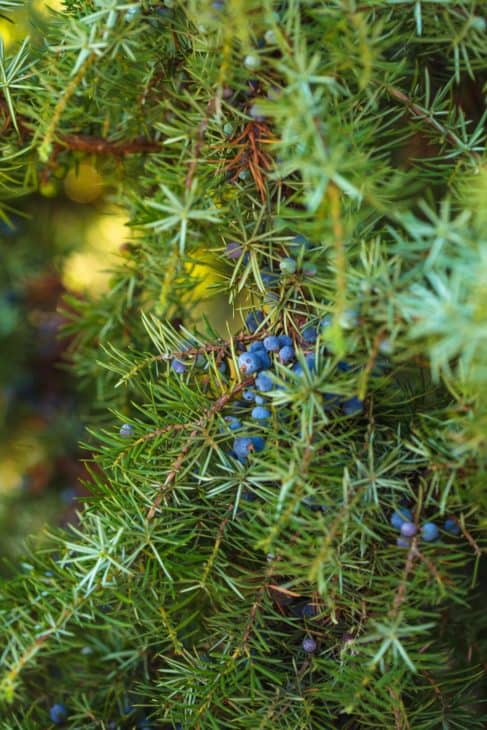
Juniper is a plant that has a different form- it can grow to 33 feet or 52 feet. This shrub usually grows in exposed locations. It has leaves that grow in a set of three and are needle-like. The leaves are green in color and the inner surface contains a white band. Some types of Juniper are safe, while others can make you violently sick. Juniper berries can be poisonous.
10. Jack-in-the-pulpit/Indian Turnip (Arisaema Triphyllum)
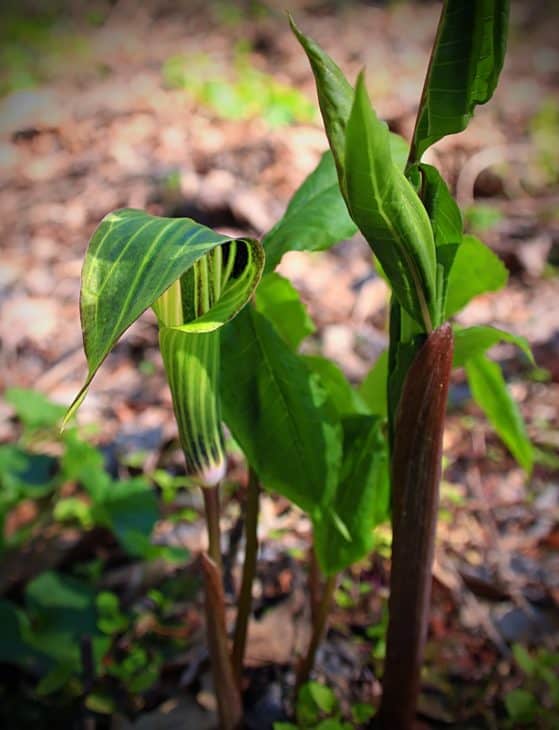
This plant contains yellowish-green leaves that may also be fully green with brown and purple stripes. The “pulpit” wraps itself around the plant and usually grows a number of tiny flowers. The roots, leaves, and stems contain calcium oxalate crystals, making them poisonous to humans. Direct contact can lead to swelling of the tongue, lips, and throat, as well as irritation on different parts of the body.
11. Meadow Saffron (Colchicum Autumnale)
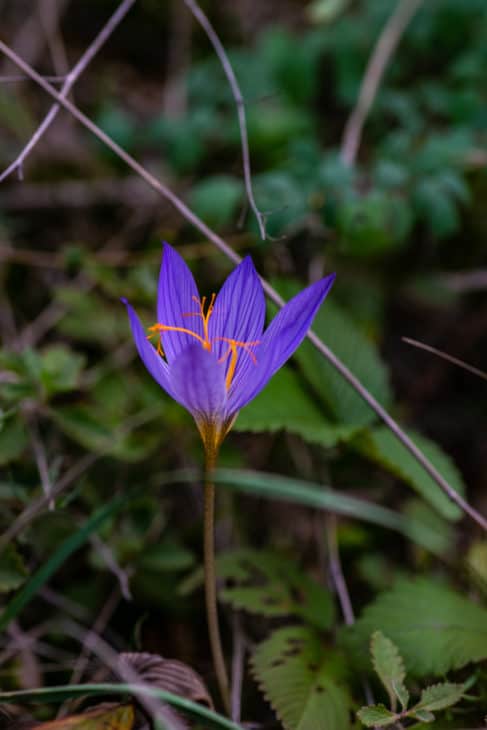
Commonly called Autumn Crocus, this is a plant that blooms in autumn and looks like true crocuses. The leaves are usually 8 to 14 inches and look like small, green tulips or romaine lettuce heads. The leaves grow in the spring and by early summer, start to disappear. All parts of this plant are poisonous and have been known to cause several intoxications and deaths.
12. Lily of the Valley (Convallaria Majalis)
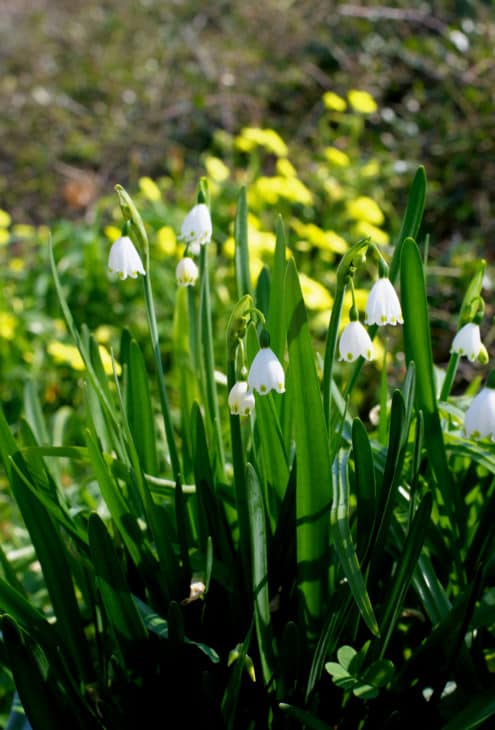
Lily of the Valley contains white flowers that are shaped like a bell. These flowers have a rich perfume that becomes apparent in late spring. The plants grow quickly and provide shade when the sun is too bright. However, it contains cardiac glycosides, which is a poisonous chemical that, if consumed by animals or humans, could cause serious reactions.
13. Meadow Garlic (Allium Canadense)
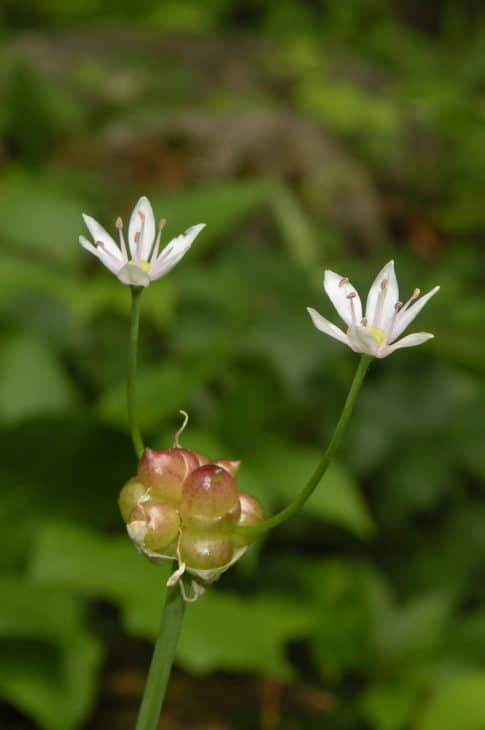
Meadow Garlic has grass-like leaves that are narrow and usually grow from the base of the plant. The steps are full of clusters of star-shaped flowers that can be white or pink in color. Moreover, this plant has a strong scent, almost like an onion. Even though this plant is safe for humans to consume, it is poisonous for cats and dogs.
14. Wake Robin (Trillium)
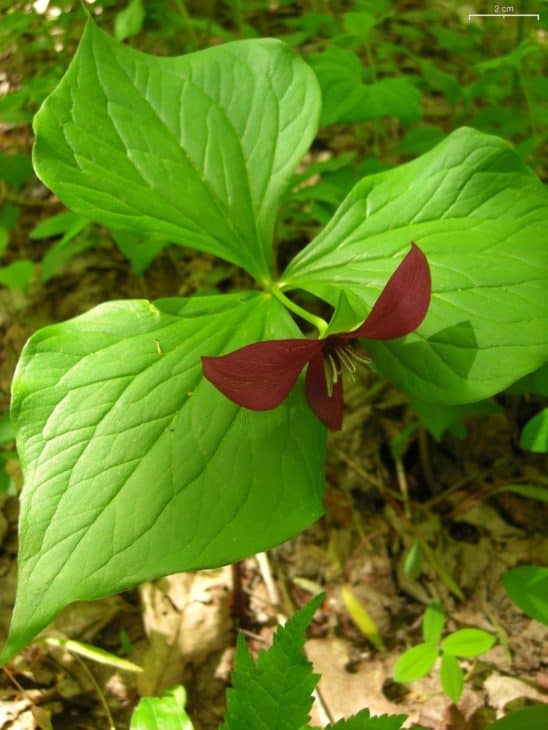
Wake Robin has green and light-yellow petals that are shaped like a lance. The leaves are big and have a lemony scent. Some of these plants become pink as they grow older, but usually, flowers are found in white. This plant has poisonous stems that grow underground that, if ingested, can lead to vomiting and diarrhea. Hence, make sure you do not throw this plant into your salad.
15. Carrion/Corpse Flower (Smilax Herbacea)
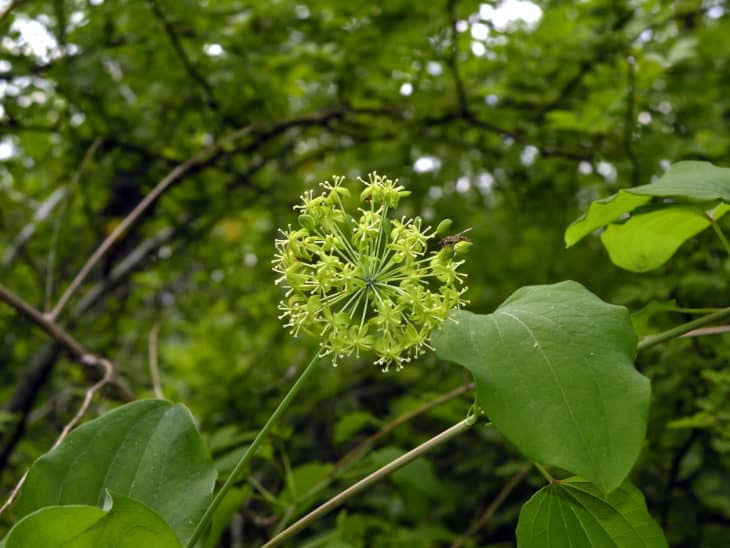
This vine has simple, alternate leaves that usually grow on climbing stones. The flowers are green in color and usually bloom in spring. At first glance, the plant might look like asparagus when it is sprouting out of the ground.
16. Northern Blue Flag (Iris Versicolor)
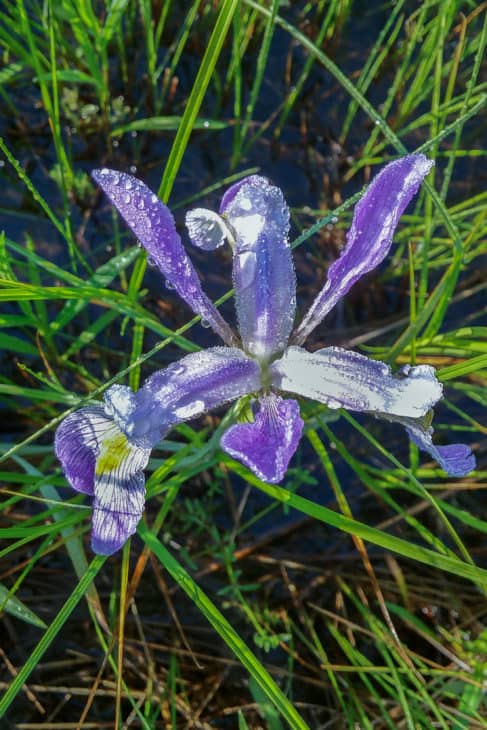
The Northern blue flag grows a number of blue-violet flowers and yellow sepals, along with sword-like leaves. Even though the flowers can be any shade of purple, they usually have yellow spots during the fall season. However, the thickened roots are poisonous and if touched, can cause skin irritation. If ingested, they may lead to abdominal pain, diarrhea, nausea, and vomiting.
17. Lady Slipper Orchid (Cypripedium Reginae)
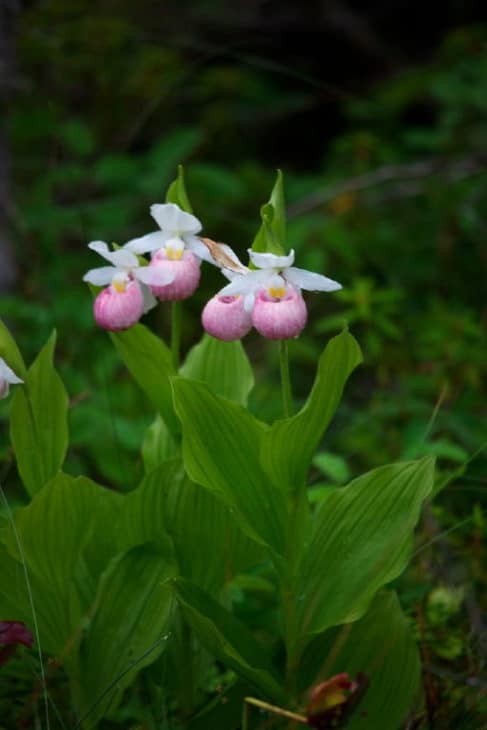
The flower that grows on this plant is usually white. It has a rosy lip and white sepals and is known to grow in damp forests or on rocky mountains where the soil is rich and alkaline-based. This plant contains an irritant that causes dermatitis on the face and hands if you get too close to it. The irritant lies in the milky white sap, so you should avoid touching this plant.
18. Great Nettle (Urtica Dioica)
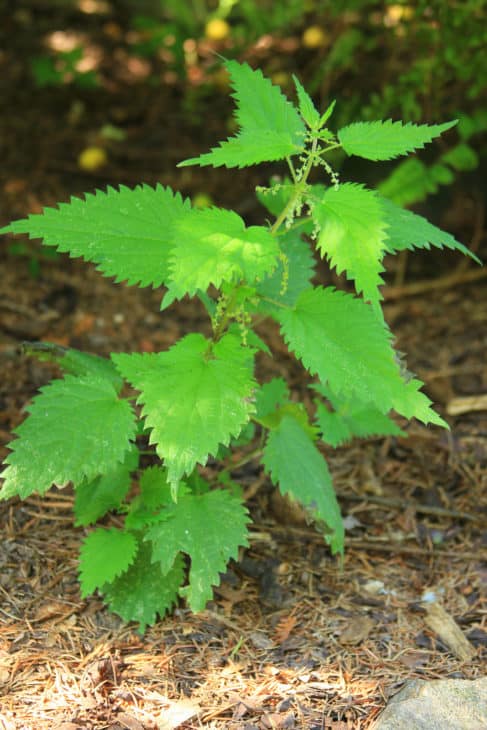
The leaves of this plant are dark green and thin and usually grow 2 to 4 inches long. They have a tapered tip, and the edges of the leaves have uneven teeth on them. The surface, on the other hand, looks rough and has veins on top. Make sure not to touch the leaves and stems of this plant as they contain formic acid, along with other toxins.
19. Wild Ginger (Asarum)
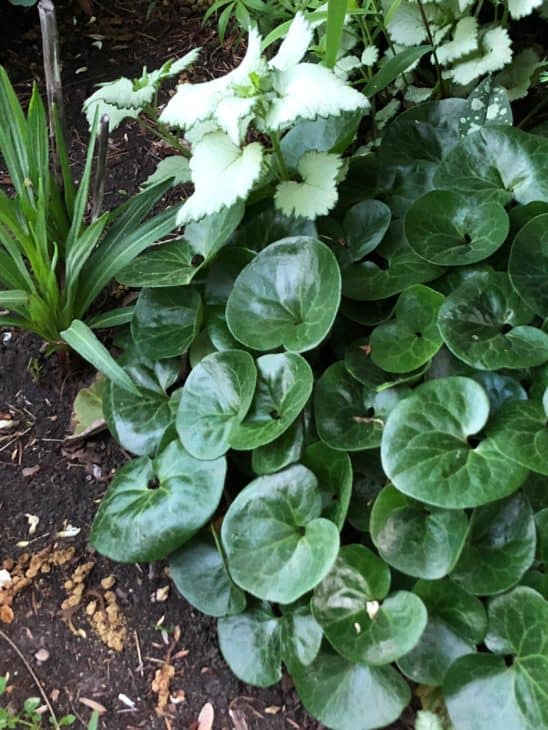
Wild Ginger has dark green leaves that are big and shaped like hearts. The plant itself has the odor of ginger and is said to taste like it too. Below the leaves lies the single hidden flower, which can be brown or green. Make sure that you do not directly touch the leaves as it causes dermatitis in humans and can lead to severe irritation.
20. Sheep Sorrel (Rumex Acetosella)
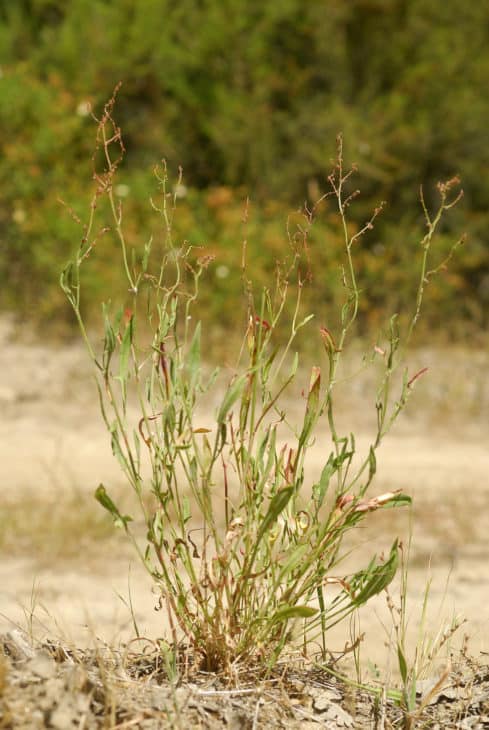
Growing as a rosette, Sheep Sorrel has small flowers that are round in shape and can be yellow, green, or red in color. The leaves grow to a mature height and usually have pointed tails. This plant is known to be poisonous for cattle; hence it is important that you keep your livestock away from the plant.
21. Buckwheat (Fagopyrum Esculentum)
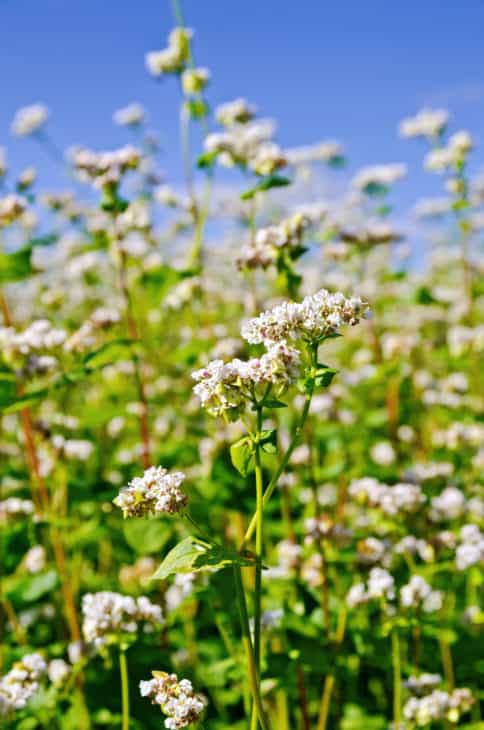
Buckwheat grows to a maximum of 2.5 inches in height and is a semi-erect plant. If there is no supportive vegetation around, it can easily sprawl and grow sideways. It has ribbed stems that turn greenish-red when they mature. Exposure to Buckwheat can lead to severe allergic reactions, such as asthma, runny nose, and a drop in blood pressure that can lead to death.
22. Periwinkle (Catharanthus Roseus)
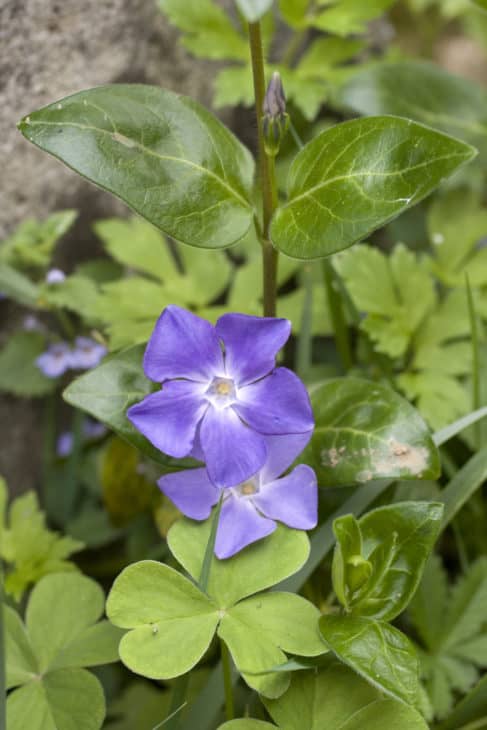
This evergreen shrub can grow to a height of 39 inches in total. The leaves are usually shaped like ovals and are broad, hairless, and glossy green in color. Even though they may look beautiful, all parts of the plant are toxic and, if ingested, can lead to headaches, hallucinations, and nerve damage. Depending on the level of ingestion and exposure, it can even be fatal for humans.

